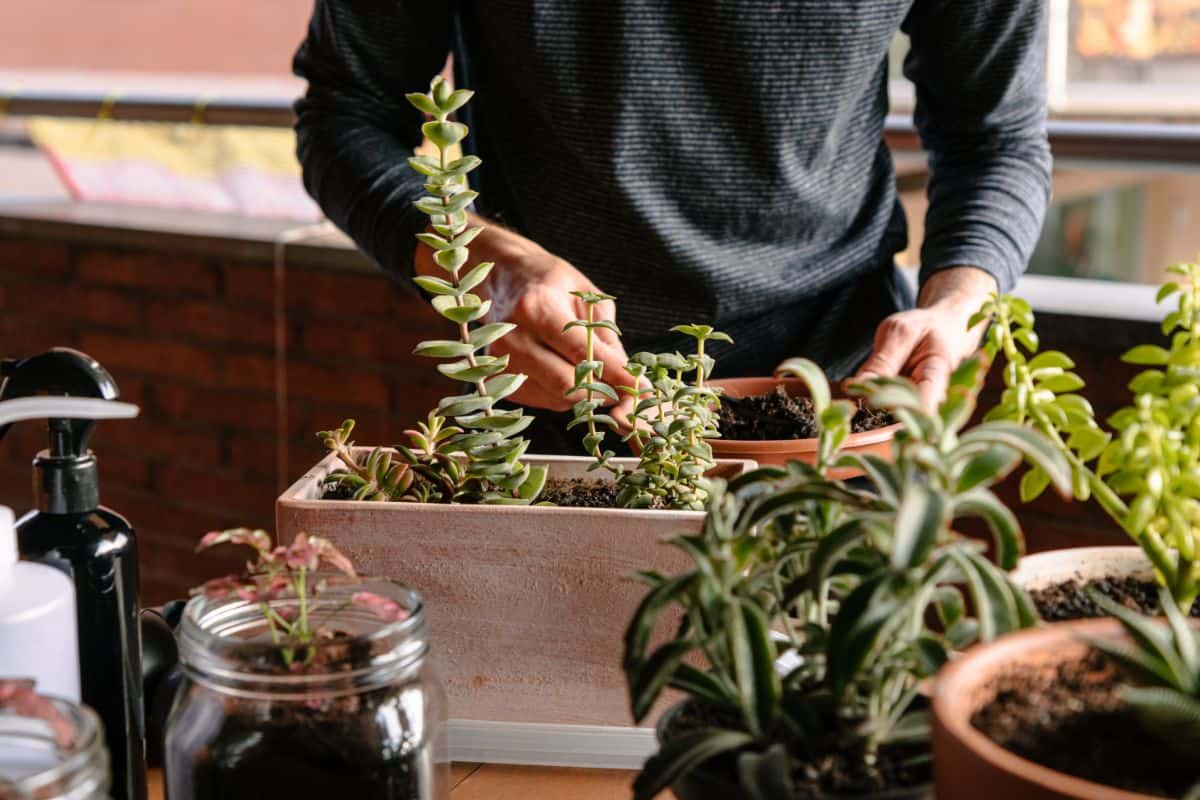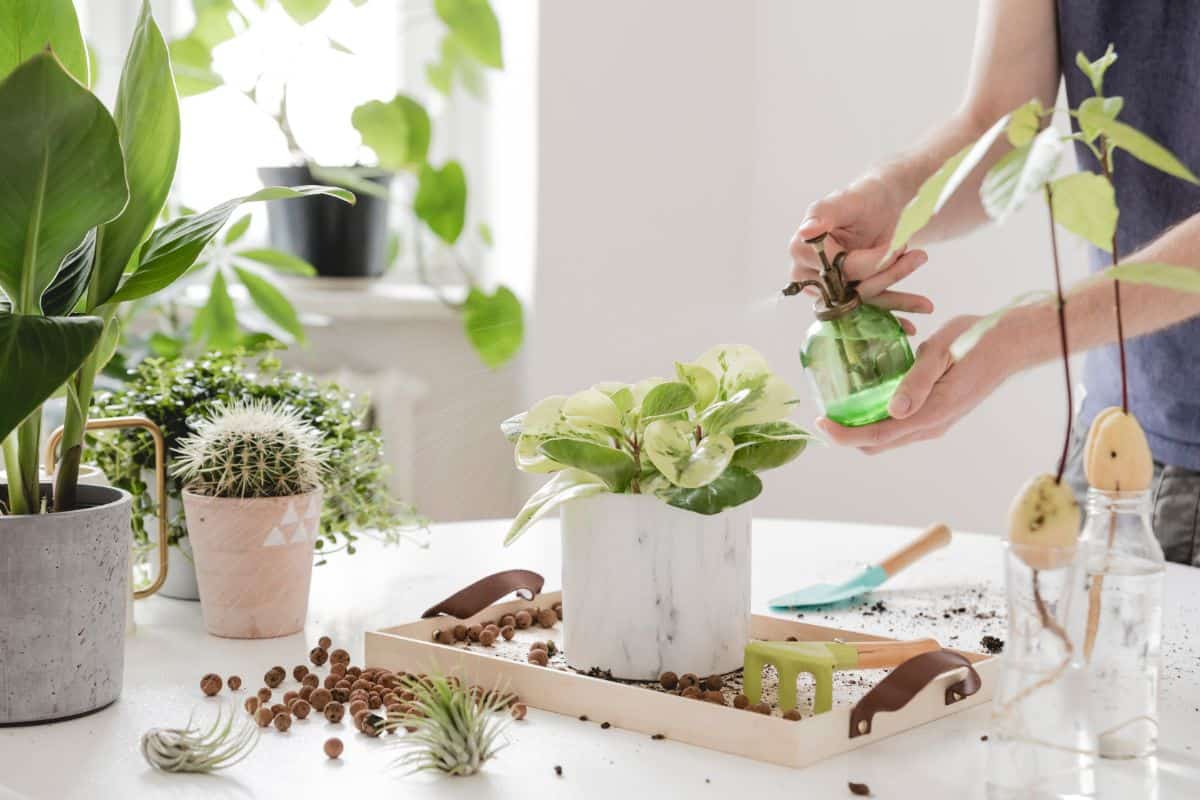Adding greenery to your homes has some amazing benefits. They clean toxins and increase oxygen and humidity levels indoors. They also reduce stress, boost creativity, concentration and are great mood boosters.

Indoor plants add some hints of summer throughout the year, but can sometimes be difficult to maintain. Don’t you generally kill a couple of indoor plants, either through overwatering or not providing enough sunlight? Everyone has at some point.
Thankfully, succulents are a hardy option for indoor greenery. Cacti are the most famous of the succulents, but they include a host of other plants which are grown especially for their eye-catching colorful foliage. With succulents demanding almost little to no care and being pretty low maintenance, they survive all indoor conditions easily.
Succulents are found in dry arid conditions and have adapted to flourish in those conditions. Their fleshy leaves, thick stems, and enlarged roots are all special adaptations to hoard water in desert conditions. In winter, many houseplants don’t survive because of the relatively low humidity, but succulents, with their adaptations, thrive in these conditions without side effects.
Jump to:
Managing Indoor Succulents

So, what happens when humidity levels rise inside your home, how do you manage the well-being of the succulents? Although hardy plants, some background information is helpful when taking care of indoor succulents.
No products found.
Most of you are inclined to water the succulents excessively. Though well-meaning, this can have an adverse effect on the plants in a humid climate. With their special thick waxy leaves, succulents are naturally equipped to absorb moisture out of the surrounding air effortlessly.
- So, if you’re growing succulents indoors in humid conditions, you’ll be better off watering them only once a week. Ensure that the soil is completely dried off before watering them again. This will prevent the plants from rotting and keep them healthy. Another hack for thriving and healthy succulents is to water them with lukewarm water, mimicking warm desert rain. This helps them absorb water better.
- Second, keep the plants next to a window to provide ventilation and movement of moisture-laden air. It is vital you keep the airflow going as this will prevent the plant from taking up excess water. If you have watered your succulents recently and it’s raining outside, move them to a drier area of the house.
- Excess humidity can lead to fungal problems in succulents which can lead to your plant losing leaves and even dying. So, another effective way is by using a dehumidifier that removes humidity from the air keeping your home dry and fresh and in turn your succulents.
- Succulents don’t do well in standing wet soaking soil. Their roots and stems are adapted to extract moisture from arid soil and store it for long periods of time. So, make sure the potting medium you use for your succulents is porous and loose enough to allow proper run-off for the water. Remember humidity and wet soil are bad for your succulents. Glass bowls or pots are a strict no for succulents as they don’t allow excess water run-off.
So make sure before you plant one, you have all the means of taking care of it.
FAQ:
Now that you know how to take care of indoor succulents in humid weather, you are on the right path to succulent growing success. The following frequently asked questions section should
Q: Do succulents like humidity?
A: No, succulents do not like humidity. Humid weather can cause succulents to lose their shape and become flimsy and develop squishy leaves. Succulents that are exposed to humid weather over a long time will begin to turn yellow, brown, or black, and rot.
Q: What happens if a succulent grows in high humidity?
A: Succulents that grow in humid weather will deteriorate very quickly. Humidity can cause powdery mildew to form, leaves to become rotten, and could eventually cause the plant to die.
Q: Do succulents need high air circulation?
A: Succulents do need to grow in areas with great air circulation so that they don’t get too hot or become exposed to humid weather for long periods of time.
Q: What succulents can tolerate humidity?
A: Delosperma Cooperi grows well in humid climates. These plants also need a lot of water to survive, which is unlike most succulent species.
Q: Do Echeverias like humidity?
A: No, Echeverias do not like humidity. These plants thrive in hot, dry climates and will deteriorate quickly in cold or humid environments
Q: What plants grow well in humidity?
A: Air plants, aloe vera, calathea, and bird nest fern are just a few examples of plants that grow well in humidity. Succulents do not thrive in humid climates, so if you want to keep a houseplant, but you want one that will hold up in humid weather, it might be better to consider a humid tolerant plant.
Q: Will my succulent grow well in full sun?
A: Most succulents need full or partial sun to survive. As long as your succulent is getting at least six to eight hours of sunlight per day, your plant will grow well.
Q: How long should you air dry succulents that are suffering from root rot?
A: If your plant has developed rotten roots, you should remove it from its pot, cut away black or brown roots and leave the root system out of the soil for 24 hours before repotting.
Q: Why do my succulents keep dying?
A: The most common succulent killer is overwatering. You might water your plant irregularly, but uncontrollable weather events such as heavy rainfall and humidity will provide your plant with more water than they need.

